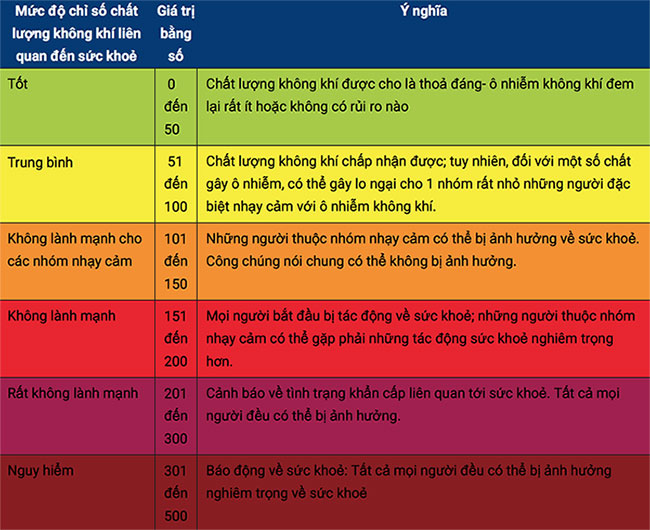The truth about air quality indicators is that many of us are still mistaken
Indicators can be very alarming, but the actual situation is not necessarily the same as what you felt.
How to know the air you are breathing is clean, quality? In fact, we used to rely on our own feelings. You breathe comfortably, the air is cool, not uncomfortable.
Science is different! In order to evaluate something we also need specific indicators. And with the clean air story, we use the air quality index AQI (Air quality Index).
AQI is an indicator used by many countries to assess the atmosphere we breathe. But the reality shows that many of us - and possibly you - are having a small misunderstanding about what it reveals.
What does AQI say?
This is an index calculated from the monitoring parameters of air pollutants in order to indicate the status of air quality and the degree of impact on human health.
AQI indicators are calculated on the formula to convert PM 2.5 measurements into air quality indicators. For those who do not know, the density of dust particles is smaller than 2.5 microns in the air around the monitoring machine. After conversion, air quality will be represented by a scale of 6 intervals, and specifically as follows:

Photo source: US Embassy in Vietnam
But only AQI alone can't tell the whole picture of the whole city
There are times when people look at the meter and get the AQI index at a high level, so that they feel confused because of poor air quality. However, the story of AQI is not as simple as that.
First of all, it is important to know that AQI is not a perfect indicator. It was built based on the raw PM 2.5 conversion formula i, while to evaluate overall air quality, other indicators such as PM10, CO 2 in the air are needed .
Secondly, in Vietnam, many people get the AQI index provided by the US Consulate's monitoring device in Vietnam. However, the embassy's website also noted that their equipment could only provide air quality indicators in the area near the consulate - where the monitoring device was located.
In other words, it is a local index, not a proxy for city-wide air quality .

It is impossible to get AQI from a monitoring machine to represent an entire city.
AQI will also be different from time to time . At peak hours, air quality will be worse due to more traffic. In rainy or windy days, AQI will also decrease.
And finally, about home air quality meters that many families are using. There is a truth that many people need to know that indoor air is sometimes of poorer quality than outdoors because of its closed structure, so it is impossible to tap into it and tell the city-wide air to be degraded.
In short, the story we need to understand here is AQI, anyway, for reference only.
- New theory reverses the truth about dinosaurs
- Scientific facts are mistaken (P2)
- AirVisual: An application that checks the air pollution level that anyone should install
- What is high-interest sample? Uses, dosage, side effects of high-quality samples
- These applications measure air pollution instead of AirVisual
- 6 common anecdotes about the universe far from reality
- Does a true drug exist?
- 8 mistaken 'standard' science but need to 'correct'
- 11 animals make people afraid but very gentle
- Eating lots of fat is considered to reduce sperm quality
- Mistakes about wisdom teeth
- The truth about shrimps is that many people think they know that they turned out to be wrong
 Is the magnetic North Pole shift dangerous to humanity?
Is the magnetic North Pole shift dangerous to humanity? Washington legalizes the recycling of human bodies into fertilizer
Washington legalizes the recycling of human bodies into fertilizer Lightning stone - the mysterious guest
Lightning stone - the mysterious guest Stunned by the mysterious sunset, strange appearance
Stunned by the mysterious sunset, strange appearance